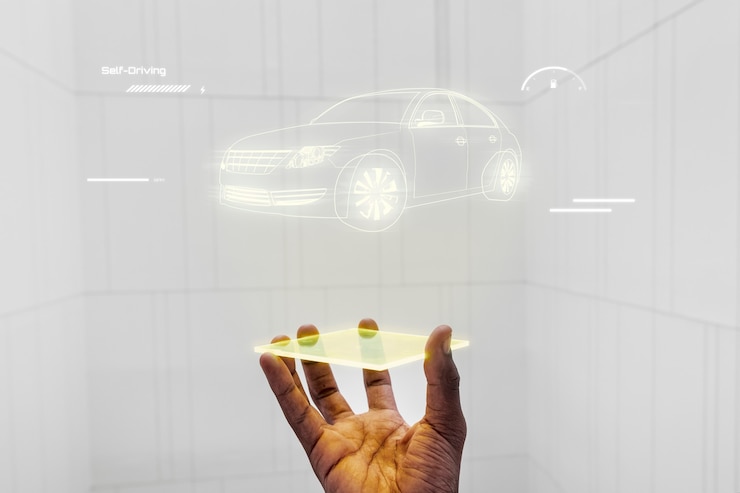How Hot Do Brake Calipers Get
How Hot Do Brake Calipers Get When it comes to unraveling the enigma of brake caliper temperatures in sports cars, one steps into a realm where variables intertwine to shape the sizzling dynamics. Delving into the intricacies of this heat-induced interplay unveils a story that’s more than skin deep. As we venture deeper, we explore the factors that influence these temperatures and the repercussions they bring, shedding light on the crucial aspect of maintaining a balanced driving experience.
The Dance of Factors: Paving the Path to Heat
The canvas upon which brake caliper temperatures are painted is a nuanced blend of various elements. Consider the weight and dimensions of the car as the opening notes in this symphony. The size and mass of the vehicle sculpt the magnitude of heat generated during braking. Yet, the terrain upon which the sports car glides acts as a choreographer, directing the performance. An undulating track with numerous curves demands more exertion from the brakes, inevitably intensifying the heat production.
The Braking Ensemble: Calipers, Pads, and More
At the heart of this blazing performance are the calipers, the master conductor of the braking orchestra. Calipers orchestrate the compression of brake pads against the rotor, generating friction that eventually halts the wheel’s rotation. This friction, in turn, transforms kinetic energy into heat, a transformation that is intrinsic to the braking process. As the temperature rises, brake pads and rotors dance to a higher tune, but it’s the calipers that largely bear the weight of this thermal exchange.
Read More : What Is Spring Brake
Track Insights: Illuminating Extreme Conditions
The racetrack amplifies this heat-based ballet. Imagine navigating a track brimming with tight turns and daring straights. The calipers, engaged in a perpetual embrace with the rotors, exert themselves with heightened vigor. This intensive performance engenders more heat, pushing the limits of the calipers’ thermal endurance. In such conditions, temperatures can skyrocket, turning up the heat in this high-speed tango.
Performance Titans: Brembo Calipers
Enter Brembo calipers, renowned for their prowess on the performance stage. With a higher thermal efficiency, these calipers can dissipate heat more effectively, making them a choice for drivers seeking that extra edge. However, the very efficiency that makes Brembo calipers shine also renders them more sensitive to excessive use and extreme conditions. On the racetrack, their temperatures might soar, resulting in the phenomenon known as “fade,” where braking efficiency diminishes due to the excessive heat.
A Spectrum of Temperatures: From Standard to Extreme
So, just how hot can brake calipers get in a sports car? Temperatures can range widely, influenced by the factors we’ve unveiled. On a typical journey, the caliper temperatures can rise significantly due to the friction-induced heat. However, if the journey veers onto the track, the calipers can transcend the ordinary, reaching temperatures that eclipse the norm.
Temperature Readings: A Glimpse into the Inferno
Temperature readings offer a window into this thermal realm. Racing conditions can push brake calipers to nearly 500 degrees Fahrenheit (260 degrees Celsius) and beyond. These intense temperatures underscore the fierce demands placed on the braking system during high-performance driving. Yet, in the realm of Brembo calipers, these figures might even inch closer to the edge, revealing the fine balance between efficiency and susceptibility to fade.
Maintaining Equilibrium: The Art of Cooling
To combat the fiery symphony within the calipers, strategies for cooling come into play. Brake discs are often equipped with cooling fins or vanes, enhancing the dissipation of heat. These cooling mechanisms become pivotal on the track, preventing excessive temperatures that could compromise braking efficiency. Moreover, racing vehicles often employ sophisticated cooling ducts and vents, meticulously channeling airflow to ensure that the calipers remain within the realms of operational excellence.
Read More : How Does An Exhaust Brake Work
Safety and Vigilance: The Road Ahead
While it’s a thrill to unravel the complexity of brake caliper temperatures, it’s vital to remember the importance of safety. Overheated brakes can lead to compromised braking performance, a critical concern for any driver. If you ever suspect that your brake calipers are experiencing excessive heat, it’s a prudent choice to seek professional assistance. A qualified mechanic can diagnose the situation, ensuring that your journey remains secure.
In the tapestry of high-performance driving, brake caliper temperatures emerge as a dynamic force, reshaping the landscape of speed and precision. From the captivating dance of friction to the cool breeze of strategic cooling, these temperatures offer a glimpse into the intricate world beneath the hood. So, as you embark on your next exhilarating journey, remember the equilibrium of heat and cooling, and embrace the symphony that unites your sports car’s prowess and your prowess at the wheel.




